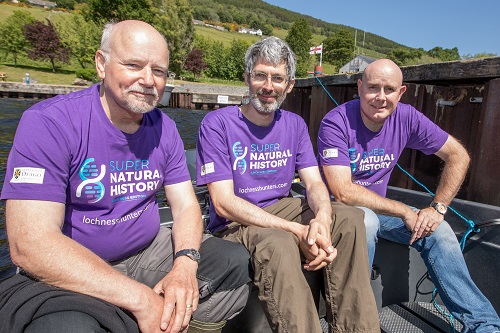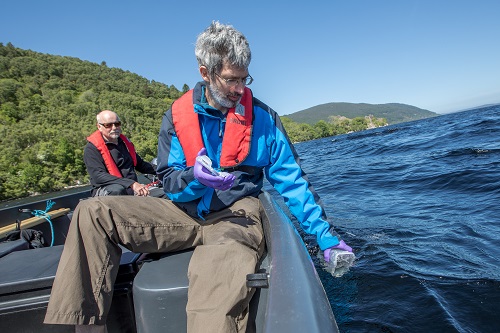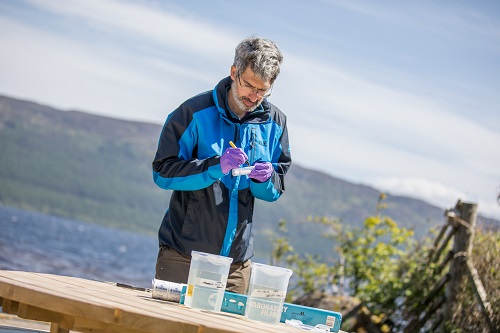Rivers and Lochs Institute at Inverness College UHI join global team of scientists in Loch Ness hunt
The Rivers and Lochs Institute at Inverness College UHI, part of the University of the Highlands and Islands, is part of a global team of scientists investigating biodiversity in the deep waters of Loch Ness.

Professor Eric Verspoor, director of the Rivers and Lochs Institute, and molecular ecologist Lucio Marcello are working as part of the team, using environmental DNA (eDNA) sampling of the waters to identify tiny DNA remnants left behind by life in the loch.
The team will work to characterize, in much more detail than has previously been possible, the organisms in Loch Ness, making comparisons between it and other lochs to assess its uniqueness.
Water sampling to collect the DNA will take place in different parts of the loch and at different depths.
The research project will be led by Professor Neil Gemmell of the University of Otago, New Zealand, and includes an international team of scientists from the UK, Denmark, USA, Australia and France.
Professor Verspoor said: "Using this new technique, we will be able to see what's in that hidden world, underneath the surface of the water. It is such an internationally renowned body of water, yet we know so little about what's in it.
"Will we find evidence of Nessie? I doubt it, but you can never rule it out. We will certainly find DNA that is difficult to ascribe to known species. We're going to find all sorts of organisms, some which may well be unique to Loch Ness. This will mean we can begin to understand how the biological communities and overall ecosystem in Loch Ness works. Most people think about the fish, and maybe Nessie, but it's far more complicated."
If there is any evidence of DNA sequences similar to those predicted to come from a large extinct marine reptile, the so called “Jurassic hypothesis”, Professor Gemmell says he will be surprised, but he is open minded about what they might find.
“Large fish like catfish and sturgeons, have been suggested as possible explanations for the monster myth, and we can very much test that idea and others,” he says.
The project, however, is much greater than a monster hunt.
“While the prospect of looking for evidence of the Loch Ness monster is the hook to this project, there is an extraordinary amount of new knowledge that we will gain from the work about organisms that inhabit Loch Ness – the UK’s largest freshwater body.”
He predicts the team will document new species of life, particularly bacteria, and will provide important data on the extent of several new invasive species recently seen in the loch, such as Pacific pink salmon, while also gaining a better understanding of the native species that reside there.
University researchers based at the Rivers and Lochs Institute have expanded their work in eDNA - DNA shed from organisms into the environment - and are developing new sampling techniques to test for the presence and abundance of species through a number of projects.
Professor Verspoor added: "The use of eDNA is an emerging, but hugely exciting field for researchers interested in the environment and its conservation. Using state-of-the-art genomic technology at the Rivers and Lochs Institute, we’re working on a number of projects which are exploring the best methodology and technique for collecting eDNA and processing it. The potential is far-reaching and if we can use eDNA to identify the presence of an organism in the environment and then use that information to work out its abundance, it will be hugely valuable.
“This kind of analysis could revolutionise conservation and resilience management and save precious time and money by providing accurate information about what’s going on in our eco-systems, allowing conservationists to respond quickly to new additions, invasive species and conservational threats. It will provide an early detection system and check on the effectiveness of eradication programmes and could replace natural monitoring altogether.”
For more information, visit www.lochnesshunters.com


Interested in learning more about research at Inverness College UHI?